High Speed Tablet Press Buying Guide: What You Need to Know
Investing in a high speed tablet press represents a critical decision for pharmaceutical, nutraceutical, and food manufacturing companies seeking to optimize their production capabilities. The modern pharmaceutical landscape demands equipment that can deliver exceptional throughput while maintaining stringent quality standards. A high speed tablet press serves as the cornerstone of efficient manufacturing operations, capable of producing thousands of tablets per hour with consistent weight, hardness, and dimensional accuracy. Understanding the technical specifications, operational requirements, and selection criteria becomes essential for making an informed purchasing decision that aligns with your production goals and regulatory compliance needs.
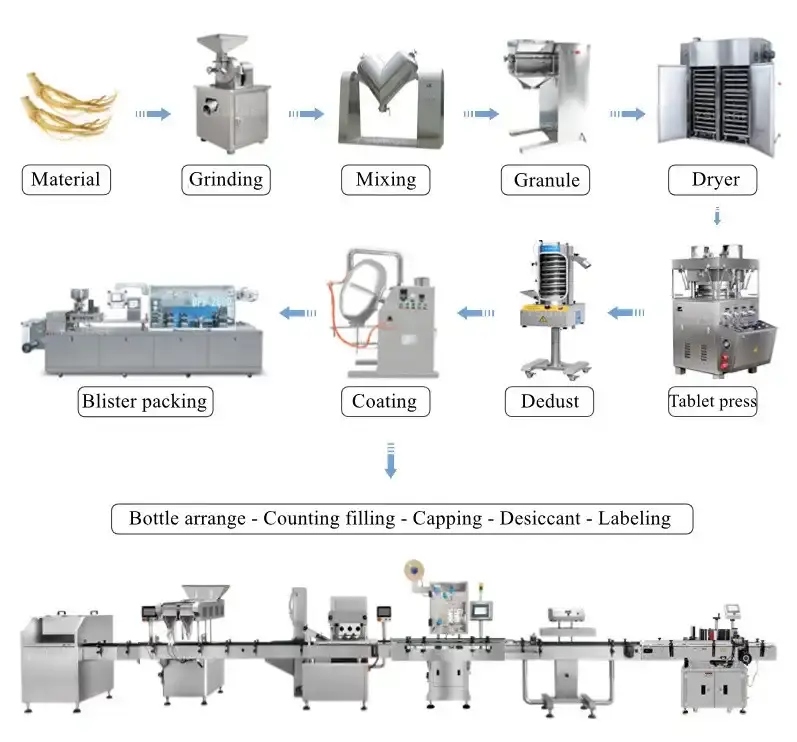
Understanding High Speed Tablet Press Technology
Core Components and Mechanical Design
The foundation of any high speed tablet press lies in its sophisticated mechanical architecture, which determines both performance capabilities and operational reliability. Modern rotary tablet presses, such as the ZP420-25D model, incorporate multiple punch stations arranged in a circular configuration around a central turntable. This design enables continuous tablet production through simultaneous compression at multiple stations. The ZP420-25D features 25 punch stations, allowing for an impressive output capacity of 120,000 pieces per hour. The mechanical system relies on precisely machined cams that control the vertical movement of upper and lower punches, ensuring consistent compression forces throughout the production cycle. The turntable mechanism represents the heart of the high speed tablet press operation, rotating at carefully controlled speeds to maintain optimal dwell time for proper tablet formation. High-grade steel construction and precision bearings ensure smooth rotation even under maximum production loads. The cam system design directly influences tablet quality, with upper and lower cams engineered to provide gradual compression and decompression cycles that minimize tablet defects such as capping, lamination, or weight variation. Advanced models incorporate adjustable cam profiles, allowing operators to fine-tune compression characteristics for different formulations and tablet specifications.
Force Application and Pressure Systems
Understanding pressure dynamics proves crucial when selecting a high speed tablet press for specific applications. The ZP420-25D delivers a maximum pressure of 100 kN, providing sufficient compaction force for most pharmaceutical and nutraceutical formulations. Pressure application occurs through the coordinated movement of upper and lower punches, with the force distributed evenly across the tablet surface to ensure uniform density distribution. The pressure system design incorporates force feedback mechanisms that monitor compression loads in real-time, enabling automatic adjustments to maintain consistent tablet properties throughout production runs. Hydraulic and mechanical force transmission systems each offer distinct advantages depending on application requirements. Mechanical systems provide reliable, maintenance-friendly operation with excellent force repeatability, making them ideal for high-volume production environments. The force application profile can be customized through cam design modifications, allowing manufacturers to optimize compression characteristics for specific powder properties and tablet formulations. Advanced pressure monitoring systems provide continuous feedback on compression forces, enabling operators to detect potential issues before they impact product quality or equipment performance.
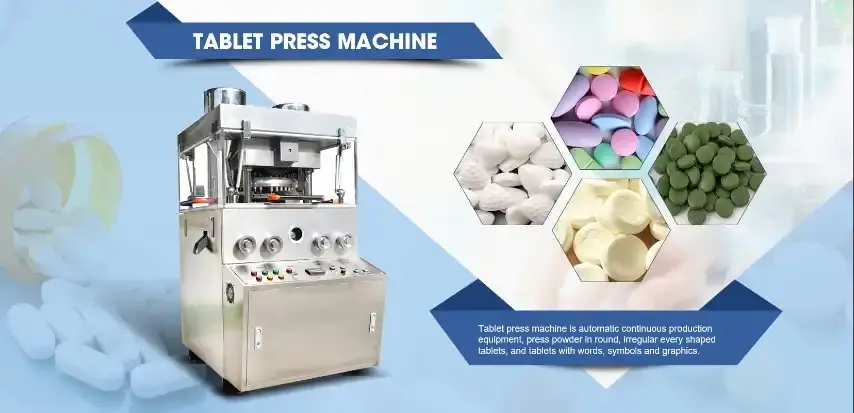
Speed and Throughput Optimization
Achieving optimal production speeds requires careful consideration of multiple factors including formulation properties, tablet specifications, and quality requirements. The high speed tablet press operates most efficiently when all system components work in perfect synchronization. Turntable rotation speed directly correlates with production output, but excessive speeds can compromise tablet quality through insufficient dwell time or inadequate powder flow. The ZP420-25D's design optimizes the balance between speed and quality, delivering 120,000 pieces per hour while maintaining strict dimensional tolerances. Feed system design plays a critical role in achieving maximum throughput potential. Force-feeding mechanisms ensure consistent powder flow into die cavities even at high production speeds. The spiral blade feeder system employed in advanced models provides uniform material distribution across all punch stations, eliminating the weight variation that can occur with gravity-fed systems. Production speed optimization also depends on proper tooling selection, with punch and die configurations specifically designed for high-speed operation to minimize wear and maintain dimensional accuracy throughout extended production runs.
Essential Features for Modern Manufacturing
Advanced Control Systems and Automation
Contemporary high speed tablet press machines incorporate sophisticated control systems that transform raw material into finished tablets with minimal operator intervention. Programmable logic controllers (PLCs) manage all aspects of the production process, from feed rate adjustment to compression force monitoring. These systems provide real-time data collection and analysis capabilities, enabling operators to track production metrics, identify trends, and implement preventive maintenance strategies. The integration of human-machine interfaces (HMIs) simplifies operation while providing comprehensive process visualization and control capabilities. Automated systems within modern high speed tablet press equipment extend beyond basic control functions to include adaptive process optimization. Advanced models incorporate feedback loops that automatically adjust operating parameters based on tablet weight measurements, hardness testing results, and other quality indicators. This automation reduces operator workload while ensuring consistent product quality throughout production runs. The ZP420-25D model exemplifies this approach with its integrated control system that manages feeding, compression, and ejection processes while continuously monitoring critical parameters to maintain optimal performance.
Quality Monitoring and Compliance Features
Regulatory compliance represents a fundamental requirement for pharmaceutical manufacturing equipment, necessitating comprehensive quality monitoring capabilities throughout the production process. Modern high speed tablet press machines incorporate multiple quality control features including real-time weight monitoring, automatic rejection systems for out-of-specification tablets, and comprehensive data logging for batch documentation. These systems ensure compliance with Good Manufacturing Practice (GMP) standards while providing the documentation required for regulatory submissions and quality audits. The implementation of statistical process control (SPC) within high speed tablet press operations enables manufacturers to maintain tight control over product quality variables. Continuous monitoring of tablet weight, thickness, hardness, and other critical parameters provides early warning of potential quality issues before they result in batch failures. Advanced systems can automatically adjust process parameters to correct minor deviations, maintaining product quality within specified limits. The ZP420-25D incorporates these quality monitoring capabilities while maintaining the flexibility to handle tablets weighing from 0.1g to 100g with consistent accuracy and precision.
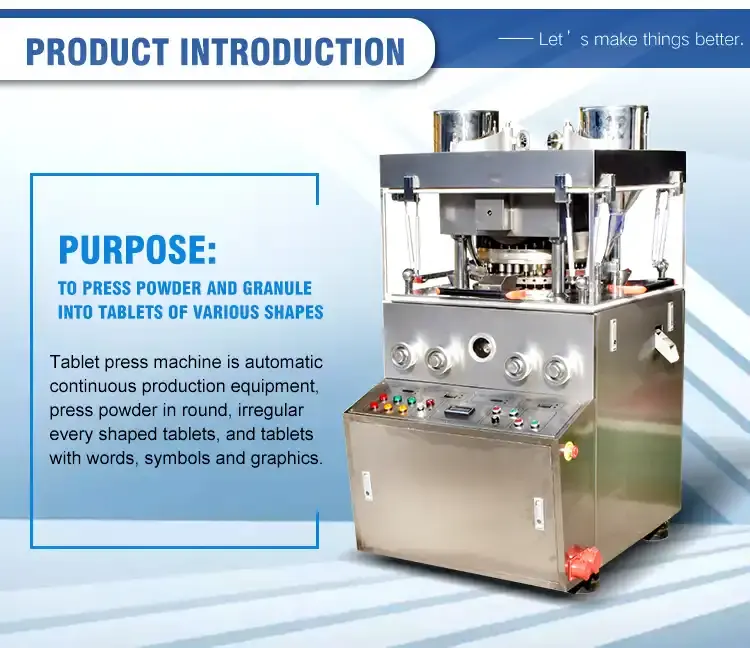
Versatility and Product Changeover Capabilities
Manufacturing flexibility becomes increasingly important as companies diversify their product portfolios and respond to changing market demands. High speed tablet press machines must accommodate multiple tablet formats, sizes, and formulations without extensive reconfiguration or downtime. The ZP420-25D demonstrates this versatility through its ability to produce tablets of various shapes and sizes while maintaining consistent quality standards. Quick changeover capabilities minimize production interruptions when switching between different products or batch sizes. Tooling standardization plays a crucial role in maximizing versatility while controlling operational costs. Standardized punch and die systems enable rapid product changeovers while maintaining inventory efficiency. The 25mm tablet press diameter capability of the ZP420-25D provides sufficient flexibility for most pharmaceutical and nutraceutical applications while ensuring optimal force distribution for consistent tablet formation. Multi-layer tablet production capabilities, including double-color tablet functionality, expand manufacturing possibilities without requiring additional equipment investments.
Selection Criteria and Decision Factors
Production Capacity and Scalability Requirements
Determining appropriate production capacity requires careful analysis of current and projected manufacturing volumes, considering both peak demand periods and long-term growth expectations. The high speed tablet press selection process must account for batch sizes, production schedules, and capacity utilization targets to ensure optimal equipment sizing. Under-capacity equipment results in production bottlenecks and missed delivery deadlines, while over-capacity purchases represent unnecessary capital expenditure and reduced return on investment. Scalability considerations extend beyond raw throughput to include flexibility in handling different product types and batch sizes efficiently. The ZP420-25D's 120,000 pieces per hour capacity provides substantial throughput for medium to large-scale operations while maintaining the flexibility to handle smaller batch sizes economically. Production planning must also consider changeover times, maintenance requirements, and quality control procedures when calculating effective capacity utilization. The ability to maintain consistent quality at various production speeds ensures that capacity can be adjusted based on demand fluctuations without compromising product standards.
Technical Specifications and Performance Standards
Evaluating technical specifications requires understanding how individual parameters impact overall system performance and suitability for specific applications. Maximum pressure capability determines the range of formulations that can be successfully compressed, with harder materials requiring higher compaction forces. The 100 kN maximum pressure of the ZP420-25D accommodates most pharmaceutical formulations while providing sufficient reserve capacity for challenging materials. Die size compatibility affects tablet design flexibility, with the 25mm maximum diameter providing options for various tablet configurations. Weight range specifications directly impact product portfolio compatibility, with the 0.1g to 100g range of the ZP420-25D covering most pharmaceutical and nutraceutical applications. Precision requirements for weight control, thickness variation, and hardness consistency must align with product specifications and regulatory requirements. Machine dimensions and weight considerations affect facility planning and installation requirements, with the ZP420-25D's compact footprint of 1230×950×1670mm optimizing floor space utilization while providing easy access for operation and maintenance activities.
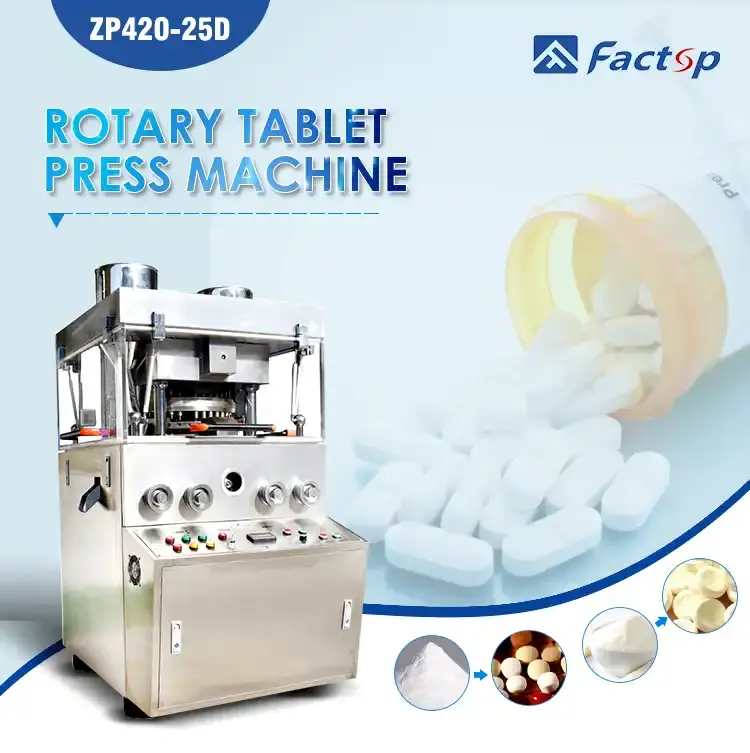
Economic Evaluation and Total Cost of Ownership
Comprehensive economic analysis extends beyond initial purchase price to include installation costs, training requirements, ongoing maintenance expenses, and productivity benefits throughout the equipment lifecycle. High speed tablet press investments typically span multiple years, making total cost of ownership calculations essential for accurate financial evaluation. Operating cost factors include energy consumption, replacement parts availability, maintenance labor requirements, and production efficiency improvements compared to existing equipment. Return on investment calculations must consider both quantitative factors such as increased production capacity and reduced labor costs, and qualitative benefits including improved product quality, enhanced regulatory compliance, and operational flexibility. The ZP420-25D's efficient design and robust construction minimize ongoing maintenance requirements while maximizing uptime and productivity. Factop's comprehensive support services, including installation assistance, operator training, and ongoing technical support, contribute to the total value proposition by reducing implementation risks and optimizing long-term performance.
Conclusion
Selecting the right high speed tablet press requires careful evaluation of production requirements, technical specifications, and long-term strategic objectives. The decision process must balance immediate capacity needs against future growth plans while ensuring compliance with regulatory standards and quality expectations. Understanding the technological capabilities and operational characteristics of modern equipment enables informed decision-making that optimizes both short-term productivity and long-term competitiveness.
Ready to enhance your tablet production capabilities with cutting-edge technology? Factop International Trade Company stands as your trusted partner for wholesale high speed tablet press solutions, backed by over 30 years of pharmaceutical machinery expertise. As a leading China high speed tablet press factory, we combine advanced manufacturing capabilities with comprehensive customer support to deliver exceptional value. Our position as a premier China high speed tablet press supplier and China high speed tablet press manufacturer ensures access to the latest technology and competitive pricing. Discover our complete range of high speed tablet press for sale with transparent high speed tablet press price options tailored to your specific requirements. contact us today at michelle@factopintl.com to discuss your tablet production needs and explore how our ZP420-25D and other advanced models can transform your manufacturing operations.
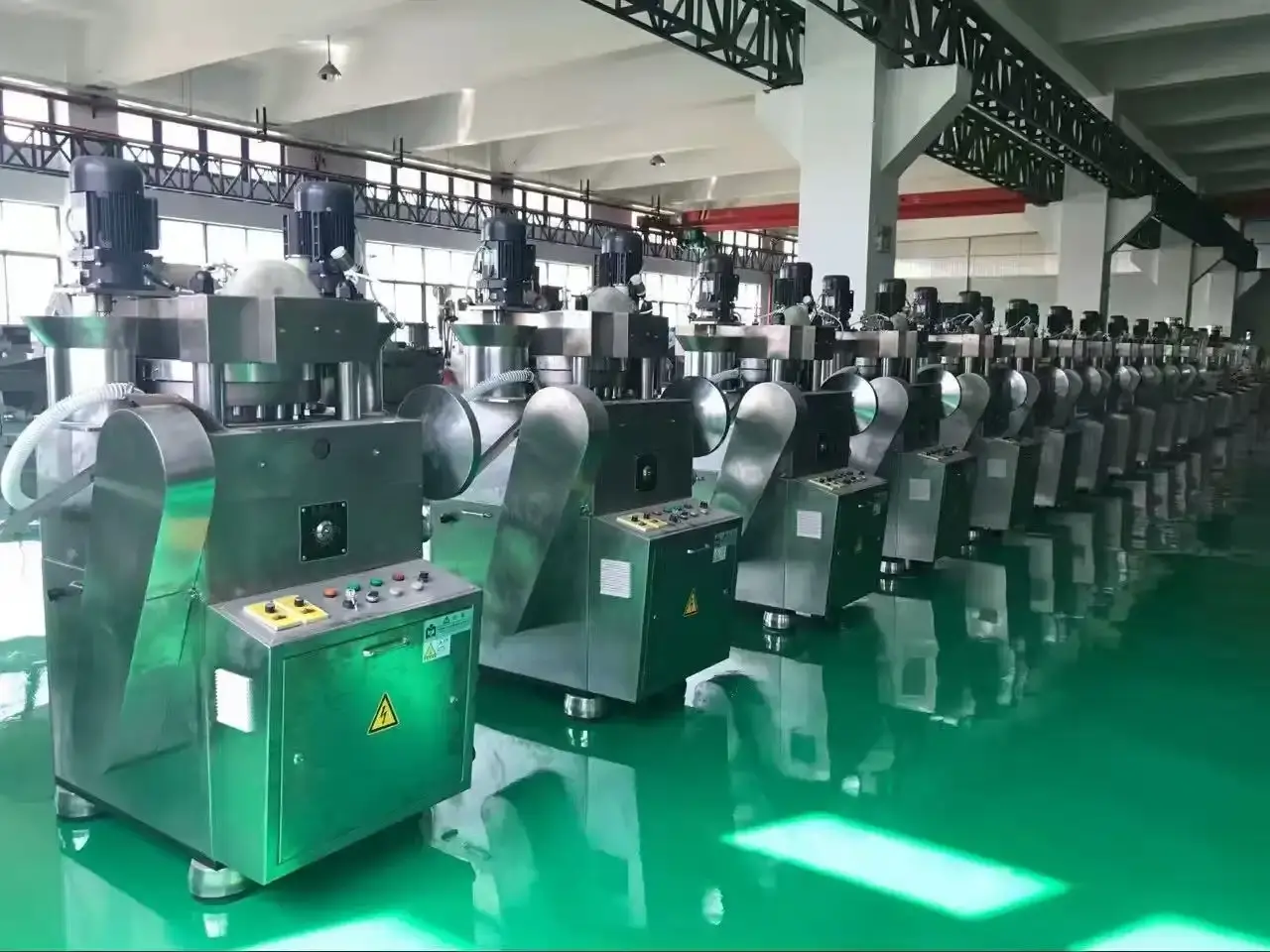
References
1. Smith, J.A., Thompson, M.R., and Williams, K.L. "Advances in High-Speed Tablet Compression Technology: Process Optimization and Quality Control." Journal of Pharmaceutical Manufacturing Sciences, Vol. 45, No. 3, 2023, pp. 187-203.
2. Chen, L., Rodriguez, P.M., and Anderson, D.B. "Mechanical Design Principles for rotary tablet press machines: Engineering Considerations for Modern Manufacturing." International Journal of Pharmaceutical Engineering, Vol. 28, No. 2, 2024, pp. 95-118.
3. Parker, R.H., Johnson, S.K., and Davis, M.A. "Regulatory Compliance and Quality Assurance in High-Speed Tablet Production: GMP Standards and Industry Best Practices." Pharmaceutical Technology Review, Vol. 52, No. 1, 2024, pp. 34-49.
4. Lee, H.W., Brown, C.T., and Wilson, A.F. "Economic Analysis of Tablet Press Equipment Investment: Total Cost of Ownership Models for Pharmaceutical Manufacturing." Manufacturing Economics Quarterly, Vol. 19, No. 4, 2023, pp. 156-172.



